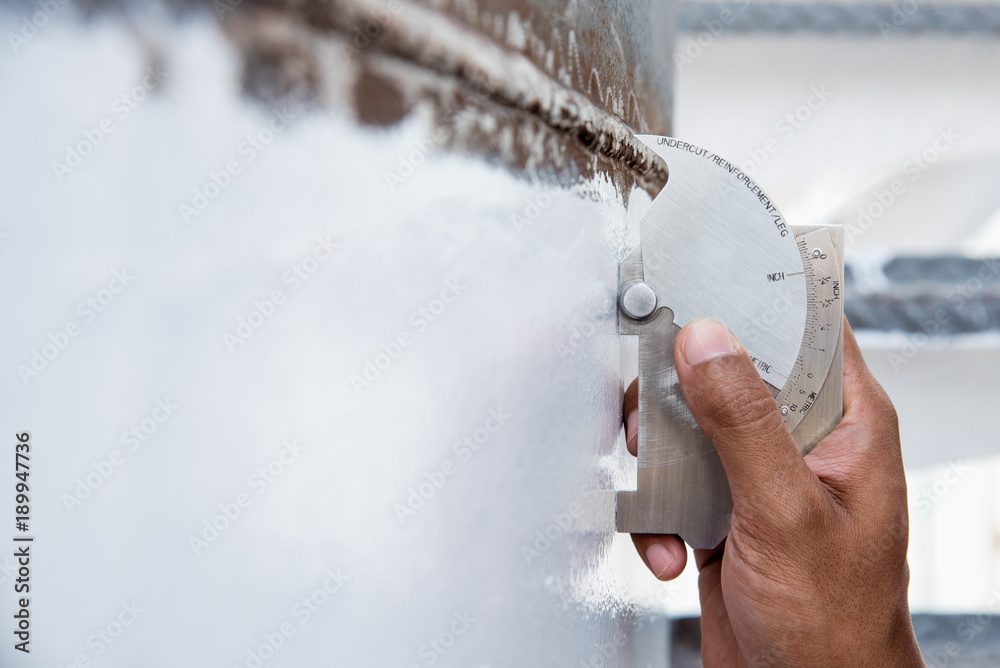What to Anticipate Throughout a Thorough Tank Welding Inspection
What to Anticipate Throughout a Thorough Tank Welding Inspection
Blog Article
An In-depth Review of Container Welding Examination Standards and Methodologies for Improved Weld Quality and Performance
The value of welding examination criteria in the manufacturing of tanks can not be overstated, as they offer as the foundation for making sure weld stability and operational reliability. Numerous examination methods, including visual assessments and progressed non-destructive screening methods, are crucial in identifying possible problems that might compromise efficiency.
Importance of Welding Assessment Criteria

Welding inspection standards include a series of criteria, including product specifications, welding procedures, and qualifications of employees associated with the welding process. By applying these standards, companies can methodically identify and remedy potential problems, therefore reducing the probability of pricey repair work or disastrous failings. Extensive assessment techniques foster a culture of accountability and precision, motivating welders to keep high degrees of workmanship.

Usual Welding Examination Strategies


Ultrasonic Examining (UT) is one more prevalent method, using high-frequency audio waves to spot inner problems that may not show up on the surface. This approach is especially effective for recognizing gaps or additions within the weld metal. Magnetic Particle Examining (MT) is likewise commonly made use of, particularly for ferromagnetic products, as it discloses surface and near-surface issues with the application of electromagnetic fields and ferrous fragments.
Additionally, Fluid Penetrant Testing (PT) detects surface-breaking issues by applying a penetrant to the weld and afterwards utilizing a developer to extract the penetrant. Each of these techniques adds to an extensive inspection method, ensuring that welds fulfill the strict top quality requirements called for in storage tank building and construction.
Regulative Requirements and Compliance
Governing requirements and conformity are necessary components in making sure the safety and security and reliability of bonded frameworks in container building - Tank Welding Inspection. These criteria serve to establish minimum needs for material residential properties, welding procedures, and assessment techniques, thus minimizing the threat of structural failures and boosting overall performance
Secret companies, such as the American Society of Mechanical Engineers (ASME) and the American Welding Society (AWS), provide standards that are widely embraced in the market. Conformity with these criteria find out this here not only guarantees adherence to ideal techniques but also satisfies lawful and legal obligations, protecting the rate of interests of stakeholders.
Governing bodies often mandate adherence to specific codes, such as ASME Code Section IX for welding certifications and API 650 for bonded containers. These codes detail needs for welding techniques, qualifications of employees, and screening techniques to verify weld honesty.
Regular audits and evaluations are essential to preserving compliance, as they assist recognize discrepancies from developed criteria. Non-compliance can lead to considerable fines, task delays, and safety and security dangers. Thus, a durable understanding of governing requirements and a dedication to compliance are vital in accomplishing high-quality and resilient welded tank structures.
Non-Destructive Examining Techniques
How can the stability of welded structures be ensured without causing damages? Non-destructive screening (NDT) approaches supply a durable remedy, allowing assessors to review weld quality without compromising the product - Tank Welding Inspection. Amongst the most common NDT techniques are ultrasonic testing (UT), radiographic screening (RT), magnetic bit screening (MT), and color penetrant screening (PT)
Radiographic screening involves passing X-rays or gamma rays with the weld, developing photos that reveal architectural problems such as splits or gaps. This technique is very useful for assessing the stability of complicated welds.
Magnetic bit testing is suited for ferromagnetic materials, where electromagnetic fields disclose surface and near-surface discontinuities. Color penetrant screening makes use of a fluid color to highlight surface-breaking defects, making it an efficient technique for non-porous materials.
Each of these NDT methods has unique advantages, permitting extensive evaluations tailored to particular products and welding procedures. By implementing these methods, industries can make sure the dependability and safety of welded structures, ultimately improving overall performance.
Enhancing Weld Top Quality Through Inspection
Effective examination plays a vital function in boosting weld high quality, offering as an essential checkpoint in the manufacture process. By identifying potential issues early, examinations minimize the threat of endangered structural integrity and guarantee compliance with industry criteria. Utilizing a combination of visual exams, non-destructive testing (NDT) methods, and mechanical analyses, inspectors can find concerns such as porosity, cracks, and incomplete fusion.
Executing a robust evaluation protocol not just improves the overall quality of welds yet also promotes a society of accountability among welders and producers. Normal training and certification of inspection personnel guarantee that they are furnished with the essential abilities to acknowledge and attend to potential issues properly. This positive technique lessens rework and connected costs, eventually adding to project efficiency.
Furthermore, comprehensive documentation of evaluation findings gives beneficial understandings into reoccuring issues, promoting continual improvement in welding methods. By leveraging advanced technologies, such as automated ultrasonic testing or go to website electronic radiography, weld top quality can be boosted with extra exact analyses. Finally, a strenuous examination procedure is vital in achieving top notch welds, ensuring safety and security, dependability, and long life in container manufacture.
Verdict
In final thought, the execution of extensive storage tank welding inspection requirements and approaches is important for making certain weld honesty use this link and performance. By using a combination of visual assessments, non-destructive testing methods, and adherence to governing standards, companies can properly recognize and alleviate prospective problems.
Report this page